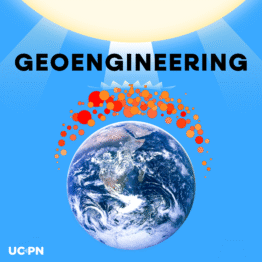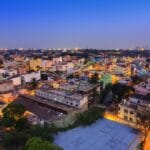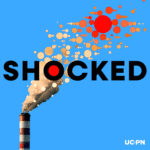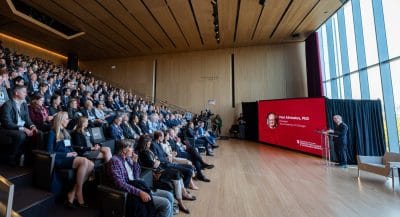Air pollution is rising rapidly in developing country cities, driven by urbanisation, motorisation, and poor infrastructure, which contribute to congestion and higher emissions (Akbar et al. 2023, Harari 2020). Sub-Saharan Africa is no exception: in Uganda, where our research takes place, cities are as polluted as those in China, with levels of PM2.5 more than four times those recommended by the Environmental Protection Agency. The same is true in many other prominent cities in the region, such as Accra, Kinshasa, Addis Ababa, and several South African cities (IQAir 2018, 2019). Recent estimates suggest that air pollution is becoming a health threat on par with malaria and HIV in the region (AQLI 2022).
In our research (Bassi et al. 2024), we study exposure to pollution for workers in Ugandan cities. We focus on exposure at workplaces. As working hours are even longer in developing countries (Bick et al. 2018), understanding what determines exposure at the workplace is critical to inform policies that can protect workers and their health.
Our key contribution is to collect novel, granular air pollution data and conduct a firm survey within Ugandan cities to study the joint spatial distribution of pollution and economic activity. As with other urban amenities (Deffebach et al. 2025, Harari 2024), we find that air pollution is highly heterogeneous within cities. In principle, this variation could allow firm owners and workers to avoid polluted areas. Yet typical manufacturing firms, which are key sources of employment in this context, are located along the busiest and most polluted roads—exposing workers to serious health risks while boosting firm profits through greater customer access. While wages are somewhat higher in polluted areas, the gains for workers are much smaller than those enjoyed by firm owners.
Measuring air pollution and local economic activity in urban Uganda
We collected novel air pollution data and a geo-coded survey of 1,000 firms in carpentry, metal fabrication, and grain milling within several Ugandan cities, together with AirQo[1] and the NGO BRAC.
To collect the pollution data, we deployed both stationary and mobile monitors. The stationary monitors were mounted on fixed locations (Figure 1a). The mobile monitors were placed on motorcycle taxis with drivers were instructed to drive around all the streets of our sampled urban areas (Figure 1b). Together, the two types of monitors allow us to recover the spatial variation in PM2.5 levels at a high level of granularity—literally street-by-street within the city.
We then match this geo-coded data with our firm survey. We also gathered data on the size and exact location of all roads in our sampled areas.
Figure 1: Stationary and mobile monitors
(a) Stationary monitor (b) Mobile monitor

Large spatial variation in air pollution within the city
Our street-by-street pollution data reveals that air quality varies dramatically within Ugandan cities, even within the same neighbourhood. For our empirical analysis, we divide each city in our sample into 500m x 500m grid cells, which we refer to as ‘locations’. Using this framework, we show that in the average sub-county—comparable in size to a large neighbourhood like the Upper West Side in New York—there are locations within walking distance that differ substantially in pollution levels. Figure 2 illustrates this heterogeneity by showing, across all grid cells, the distribution of reductions in PM2.5 that could be achieved by moving 500, 1,000, or 2,000 meters. For example, relocating just 2,000 meters from a given location would allow more than half of firms to reduce exposure by over 25 μg/m³—equivalent to moving from a city like Jakarta (49 μg/m³) to one like Milan (23 μg/m³). This variation is largely explained by the road network: locations near major roads are significantly more polluted, and we present multiple pieces of evidence confirming that traffic is a key source of air pollution in this context.
Figure 2: Significant variation in air pollution within sub-counties

Notes: This figure represents the maximum decrease in pollution one can achieve by moving at most 500 m (green), 1000 m (yellow), or 2000m (red) within the same sub-county. The level of observation is a 500 x 500 m grid cell.
These results show that, in principle, firm owners and workers could avoid the air pollution by working in less polluted parts of the city located just a few hundred meters away.
Importantly, while satellite data (van Donkelaar et al. 2021) correlates well with our on the ground measurements across sub-counties (Figure 3a), it does not capture local variation in PM2.5 levels within the city, in part because the satellite data is constructed through spatial interpolation that tends to attenuate within-city differences in pollution levels (Figure 3b). This highlights how our granular data is necessary to uncover patterns of within city variation in pollution exposure.
Figure 3: The need for granular pollution data
(a) Strong correlation of on-the-ground measurements and satellite data across sub-counties

(b) No correlation of on-the-ground measurements and satellite data within sub-counties

Notes: Panel (a) shows across sub-county variation in average PM2.5 in both our data (x-axis) and the satellite data (y-axis). Sub-county averages from our data are grouped into 10 bins and averages for the same sub-counties from the satellite data are computed for each bin. Panel (b) shows within sub-county variation in PM2.5 across grid cells. The sub-county average is subtracted from each grid-cell average pollution to recover grid-level deviation from sub-county average PM2.5. Satellite data is directly available at the grid-cell level (approximately 1.1km x 1.1km). Our pollution measurements are residualised from temporal variations and averaged by grid-cell as explained in Bassi et al. (2024).
The costs and benefits of locating along major roads
Figure 4 summarises the key findings of the paper. Grid cells with larger roads tend to have higher pollution levels (top-left), but also exhibit greater firm density (top-right). The bottom panels show that firms near large roads report higher average profits (bottom-left) and, to a lesser extent, higher wages (bottom-right). Next, we explore these patterns and their implications in greater detail.
Figure 4: The costs and benefits of locating along major roads for firm owners and workers

Notes: Each panel shows averages across grid cells grouped by median road size in the cell. The top-left panel plots PM2.5 concentrations; the top-right panel plots firm density (number of firms per km², conditional on at least one firm); the bottom-left panel shows log firm profits; and the bottom-right panel shows log employee wages. Pollution, log profits, and log wages are averaged at the grid-cell level. The sample includes only grid cells with at least one road and at least one firm.
Small firms locate along major polluted streets
We can further illustrate the patterns of firm sorting using Figure 5, which displays a map of one sampled urban area. The figure shows that locations near the larger road (solid dark line) are more polluted (darker blue colour). At the same time, the firms in our data (red dots) tend to locate near the largest roads (solid dark line). That is, firms sort to large and polluted roads.
This location choice increases profits for owners, but wage gains for workers are minimal.
Using our survey, we show that profits and customer access are much higher along major roads than in other locations in the same sub-county. Consistent with this, firms report access to customers as the main reason for their location choice. In a context where information frictions hinder market access for firms (Lagakos 2016, Bergquist et al. 2024, Vitali 2024, Pelnik 2025), locating on large roads provides visibility to consumers, thus increasing demand. However, major roads are associated with only a minimal increase in wages for workers. That is, the benefits from this location choice are unequally distributed between firm owners and workers. Using a model, we show that this suggests that workers’ bargaining power in this context is very low.
We also show that investments in equipment to protect workers from pollution are limited. This is not surprising, as most production activities take place open air or in poorly insulated buildings, which limits the effectiveness of potential adaptation strategies such as air purifiers.
Figure 5: Firm location choice and pollution levels in one sampled sub-county

Notes: Pollution levels, roads and firm location in one sampled urban area.
Workers and firm owners incur significant health costs due to firm location choice
To what extent could firms improve their workers’ health by relocating to nearby areas with less traffic and lower pollution? To answer this, we compare pollution levels across areas with different road sizes. As shown in Figure 4, firms currently on primary roads could reduce workers’ PM2.5 exposure by 4.6 μg/m³ by relocating to nearby secondary roads—equivalent to a 2.2-month gain in life expectancy, or a monetised health benefit of US$397 based on WHO guidelines valuing a year of life at three times GDP per capita (Iino et al. 2022). For context, an odd-even traffic scheme that halves vehicle volume would reduce pollution by 6.2 μg/m³. These estimates underscore the significant health implications of firm clustering along major roads.
Yet, the lifetime financial benefits from the current location choice likely outweigh the pollution cost, especially for firm owners.
Despite the substantial health costs associated with pollution, firms’ location choices appear economically rational given the large profits tied to major roads. As shown in Figure 4, firms near primary roads earn significantly higher profits than those on smaller roads, and this remains true even after controlling for firm and owner characteristics and sub-county fixed effects. Relocating from a primary to a secondary road would reduce firm profits by 16%, or about $5,145 over the firm’s lifetime—far exceeding the health costs of pollution. For workers, the trade-off is more balanced: their slightly higher wages in polluted areas roughly offset the health costs, leaving them approximately indifferent.
These trade-offs are most relevant for the marginal firm deciding where to locate, as the estimates hold pollution and customer demand fixed. In our research, we develop a firm location model to explore how general equilibrium adjustments in traffic and demand affect the benefits of relocation.
Finally, the extent to which firm owners and workers are willing to relocate, and the extent to which workers demand higher wages or more protective equipment in polluted locations, depends on the information they have about pollution levels. To assess this, we run a randomised information experiment, which shows that firm owners underestimate air pollution and value receiving more information about the local distribution of pollution.
Policy implications: Firms and pollution
We highlight three implications of our results that are relevant for development policy:
- Reducing emissions is especially urgent due to job clustering in polluted areas. Since firms and workers cluster in the most polluted areas, citywide pollution averages–commonly used to guide policy action due to data limitations–may significantly underestimate actual exposure. This underscores the urgency of reducing emissions. Policies such as Bus Rapid Transit systems, stricter vehicle emission norms, or motorcycle electrification could effectively reduce workplace exposure.
- Relocating firms may be costly and difficult. Firm owners face strong incentives to remain in polluted areas due to sizable profit losses from relocation. For the median firm, moving within 1,000 meters to a cleaner location would not be cost-effective under WHO benchmarks, as financial losses outweigh health gains. As policymakers look for ways to decongest urban cores, recent research (Gechter and Kala 2024) highlights the high costs such relocation policies can impose on firms. A key policy challenge is identifying ways to encourage firm relocation while minimising disruption to profitability—an area that deserves further investigation.
- Information interventions could help raise awareness and shift behaviour. Many firm owners in urban Uganda are imperfectly informed of their pollution exposure. A growing evidence base explores when information can change behaviour (Barwick et al. 2024, Baylis et al. 2023, Chowdhury et al. 2025, Hanna et al. 2021). In this context, informing firms and workers about pollution hotspots, peak exposure times, and health risks may offer cost-effective policy interventions.
References
Air Quality Life Index (AQLI) (2022), “Pollution facts,” University of Chicago.
Akbar, P A, V Couture, G Duranton, and A Storeygard (2023), “Mobility and congestion in urban India,” American Economic Review, 113(4): 1083–1111.
Barwick, P J, S Li, L Lin, and E Y Zou (2024), “From fog to smog: The value of pollution information,” American Economic Review, 114(5): 1338–1381.
Bassi, V, M E Kahn, N Lozano Gracia, T Porzio, and J Sorin (2024), “Jobs in the smog: Firm location and workers’ exposure to air pollution in African cities,” Unpublished manuscript.
Baylis, P, M Greenstone, K Lee, and H Sahai (2023), “Is the demand for clean air too low? Experimental evidence from Delhi,” Unpublished manuscript.
Bergquist, L F, C McIntosh, and M Startz (2024), “Search costs, intermediation, and trade: Experimental evidence from Ugandan agricultural markets,” Unpublished manuscript.
Bick, A, N Fuchs-Schündeln, and D Lagakos (2018), “How do hours worked vary with income? Cross-country evidence and implications,” American Economic Review, 108(1): 170–199.
Chowdhury, A, T Garg, M Jagnani, and M Mattsson (2025), “Misbeliefs, experience, and technology adoption: Evidence from air purifiers in Bangladesh,” Unpublished manuscript.
Deffebach, P, D Lagakos, Y Miyauchi, and E Yamada (2025), “The spatial distribution of income in cities: New global evidence and theory,” Unpublished manuscript.
Gechter, M, and N Kala (2025), “Firm presence, pollution, and agglomeration: Evidence from a randomized environmental place-based policy,” Unpublished manuscript.
Hanna, R, B Hoffmann, P Oliva, and J Schneider (2021), “The power of perception: Limitations of information in reducing air pollution exposure,” Inter-American Development Bank.
Harari, M (2020), “Cities in bad shape: Urban geometry in India,” American Economic Review, 110(8): 2377–2421.
Harari, M (2024), “Residential patterns and local public goods in urban Brazil,” Unpublished manuscript.
Iino, H, M Hashiguchi, and S Hori (2022), “Estimating the range of incremental cost-effectiveness thresholds for healthcare based on willingness to pay and GDP per capita: A systematic review,” PLOS ONE, 17(4).
IQAir (2018), “2018 World Air Quality Report.”
IQAir (2019), “2019 World Air Quality Report.”
Lagakos, D (2016), “Explaining cross-country productivity differences in retail trade,” Journal of Political Economy, 124(2): 579–620.
Pelnik, C (2025), “Moving to profitability? Alleviating constraints on microentrepreneur location,” Unpublished manuscript.
van Donkelaar, A, M S Hammer, L Bindle, M Brauer, J R Brook, M J Garay, N C Hsu, O V Kalashnikova, R A Kahn, C Lee, R C Levy, A Lyapustin, A M Sayer, and R V Martin (2021), “Monthly global estimates of fine particulate matter and their uncertainty,” Environmental Science & Technology, 55(22): 15287–15300.
Vitali, A (2024), “Consumer search and firm location: Theory and evidence from the garment sector in Uganda,” Unpublished manuscript.























